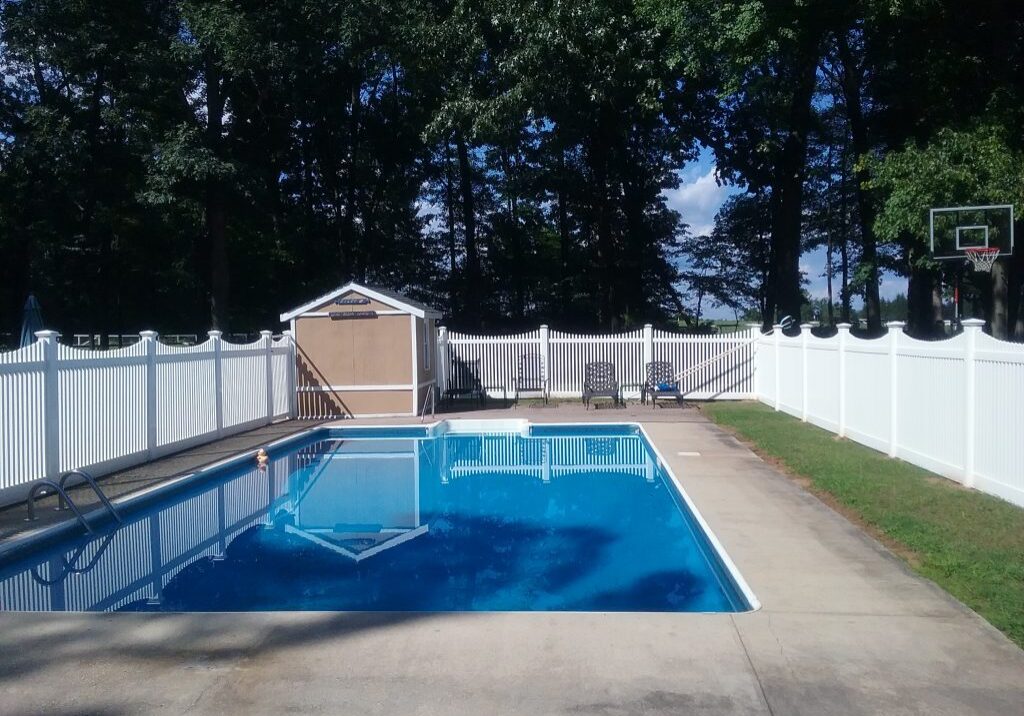All Categories
Featured

As home owners and businesses alike end up being extra ecologically mindful, locating lasting and eco-friendly fence materials is a crucial consideration. Whether you're aiming to develop a fencing for privacy, safety and security, or aesthetic appeal, selecting materials that decrease your ecological footprint can help shield the world. In this post, we will certainly discover a number of environmentally friendly fence alternatives, each offering distinct benefits for your residential or commercial property and the atmosphere.
- Bamboo Fencing: A Renewable Resource. Bamboo is commonly recognized as one of the most green and sustainable fence materials offered today. As a turf instead of a tree, bamboo expands promptly and can reach full maturation in simply 3 to 5 years, making it a very renewable resource.
Ecological Benefits: Bamboo takes in extra co2 than numerous other plants, aiding offset greenhouse gases. Additionally, bamboo needs marginal pesticides and plant foods, making it a healthier alternative for the atmosphere. Durability: Effectively treated bamboo is immune to bugs and wetness, meaning it can endure the aspects far better than various other timber choices. Aesthetic Charm: Bamboo provides a tidy, modern look that works well with various landscape design styles, from exotic gardens to modern metropolitan styles. While bamboo fencing is resilient, it does require appropriate like keep its long life, such as routine cleaning and regular sealing.
- Recycled Wood Secure Fencing: Granting New Life to Old Materials. Recycled timber is an exceptional environmentally friendly selection for those who want the natural elegance of timber fencing without adding to logging. This material is commonly sourced from old structures, pallets, or other repurposed timber items, minimizing the demand for freshly harvested lumber.

Environmental Benefits: Utilizing recovered timber helps minimize the need to cut down brand-new trees and can additionally prevent beneficial products from winding up in garbage dumps. Resilience: Relying on the sort of timber and therapy it receives, recycled wood fencings can be equally as durable as brand-new timber, particularly if maintained appropriately with sealers and weatherproofing. Visual Allure: Recycled timber fencings carry a rustic charm and can be tarnished or painted to fit your individual style. The major consideration with recycled timber is its maintenance. With time, wood can come to be vulnerable to rot, insect damage, and weathering, so routine maintenance is necessary to expand the life of your fence.
- Steel Fence: Sturdy and Recyclable. Aluminum and steel secure fencing, especially when sourced from recycled products, supplies a strong, environment-friendly option to conventional wood fencing. These steels are 100% recyclable, suggesting they can be repurposed forever without shedding top quality.

Ecological Advantages: Steels like aluminum and steel decrease the requirement for new mining and resources removal, both of which have substantial ecological effects. Furthermore, recycling steels needs much less power contrasted to producing new metal from raw materials. Durability: Metal fencings are incredibly solid, resistant to weathering, and require little maintenance compared to timber choices. Aesthetic Appeal: Steel fences can be created in streamlined, modern-day designs, or even more standard looks, supplying flexibility for any type of residential property. While steel fences are low-maintenance and sturdy, they are not as reliable at providing personal privacy compared to timber or plastic choices because of the areas in between the bars or slats.
- Living Fences: All-natural and Eco-friendly. Living fences, made from dense hedges, shrubs, or trees, offer a all-natural and eco-friendly choice to typical fencing. Not only do they produce a personal privacy barrier, but they also add to the atmosphere by supporting wildlife and enhancing air top quality.
Ecological Advantages: Living fences soak up carbon dioxide, enhance soil top quality, and offer habitats for birds and other wild animals. In addition, they reduce noise pollution and enhance air quality by filtering toxins. Durability: While living fences need even more maintenance than various other materials (e.g., trimming, watering), they can be exceptionally long-lasting if correctly kept. Visual Charm: Living fencings develop an attractive, natural border that enhances the landscape and provides a one-of-a-kind and natural look contrasted to conventional fence choices. The vital drawback of living fencings is that they require continuous upkeep and care, consisting of routine cutting and pest control.
- Hemp Fencing: Lasting and solid. Hemp is a fast-growing and renewable plant that can be made use of to develop strong, environment-friendly secure fencing. Hemp secure fencing is made from all-natural hemp fibers, which are sturdy, naturally degradable, and resistant to pests.
Environmental Advantages: Hemp proliferates and calls for little water or chemicals. It likewise helps sequester carbon, lowering greenhouse gases in the atmosphere. When the fencing is no much longer needed, hemp is eco-friendly and can be composted. Durability: Hemp is normally resistant to mold and mildew and insects, which assists it hold up against various climate condition and stay clear of using extreme chemicals. Sustainability: Hemp farming is much less resource-intensive compared to other crops and assists keep soil health through crop rotation. Hemp fences are a fairly new choice on the market, and they may not be as commonly available as various other products. Additionally, they may not be as frequently utilized for high-security applications.
Conclusion: Choose Eco-Friendly Fence for a Lasting Future. There are several green secure fencing products to consider, each offering one-of-a-kind benefits for your home and the atmosphere. Whether you pick bamboo, recycled wood, steel, living fences, or hemp, each option permits you to produce a useful and attractive border while decreasing your environmental footprint. By picking sustainable materials, you add to a greener future and support the expanding movement towards accountable building and construction and landscaping methods.
Latest Posts
Elegant, Resilient Ceramic Tile Flooring for every single Area
Published Apr 20, 25
1 min read
Change Your Home with Quality Flooring Solutions
Published Apr 20, 25
1 min read
Why Trust NAPA AutoCare? Montclare Auto Repair Is Your Trusted Choice
Published Apr 20, 25
2 min read